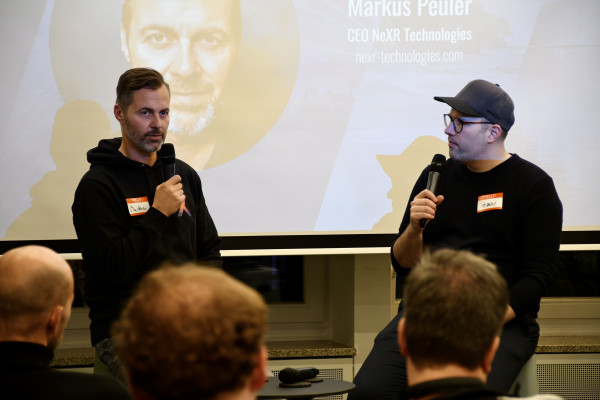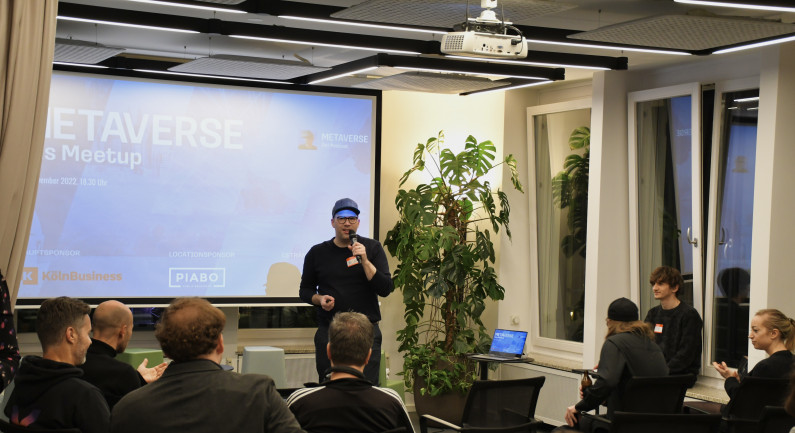As big as the hype around the Metaverse was in 2021, it died down just as quickly. Still, the topic is far from over. The Metaverse’s current status was presented and discussed by Thomas Riedel – host of the “Metaverse-Podcast” – at the Metaverse Meetup at our Berlin headquarters.
Idea of a Metaverse – Huge but Short-Lived Hype
First mentioned in a 90s science fiction novel, the buzzword “Metaverse” is more relevant than ever in today’s tech community. When Facebook founder and CEO Mark Zuckerberg announced in the fall of 2021 that his company would be renamed “Meta” and that he planned to build a virtual parallel universe, this triggered a real hype among tech enthusiasts about the so-called “Metaverse”. This is not surprising: The idea of people communicating, negotiating, shopping and interacting with each other in new ways with individual avatars in a virtually created world holds enormous market potential for companies in various industries.
However, criticism and scandals surrounding the planned Metaverse were quick to follow. The crypto crash in 2022 and problems with NFT games may have also contributed to the fact that the hype has died down considerably since Zuckerberg’s statement.
Hardware for the Metaverse: Diversity in the VR Goggles Market
Add to that another obstaclet: The basis of the perfect customer experience in the Metaverse is the hardware, i.e., among other things, the right virtual reality headset. There are now a variety of models for different needs, but many of them are not yet ready for mass production – or they are too expensive, too clunky, or both. There are also various unresolved regulatory issues regarding approval in international markets. Nevertheless, tech giants like Google and Apple are working at full speed to further develop VR glasses and their areas of application. One thing is clear: The headsets will only succeed on the mass market if they are also suitable for everyday use. They have to be comfortable and sufficient suitable content needs to be available to make them attractive.
Potential of the Metaverse: Opportunities for Companies and Customers
There are enough companies, product developers and marketing specialists who continue to believe in the potential of virtual worlds and are even developing entire business models that only work in the Metaverse – often without any VR glasses at all. Thomas Riedel discussed examples of this with Markus Peuler, CEO of NeXR Technologies . The focus of the conversation was on retail opportunities for custom-fit clothing. In the Metaverse of tomorrow, customers will be able to go shopping with their lifelike avatars, including trying on clothes, shoes, etc. The advantage is obvious for both sides: companies save the costs of the many returns, consumers save the frustration and trouble of having to return more than half of the ordered goods because of sizing, fit or poor color matches. Even today, end users can already experience this new kind of shopping with the help of their smartphones – no extra hardware required.

Markus Peuler, CEO of NeXR Technologies and Thomas Riedel
Conclusion
Here is no question that we are still at the very beginning when it comes to the Metaverse. However, those who miss out now could be left behind later, because analysts estimate the market volume of the Metaverse at 800 billion dollars by the end of 2023.


